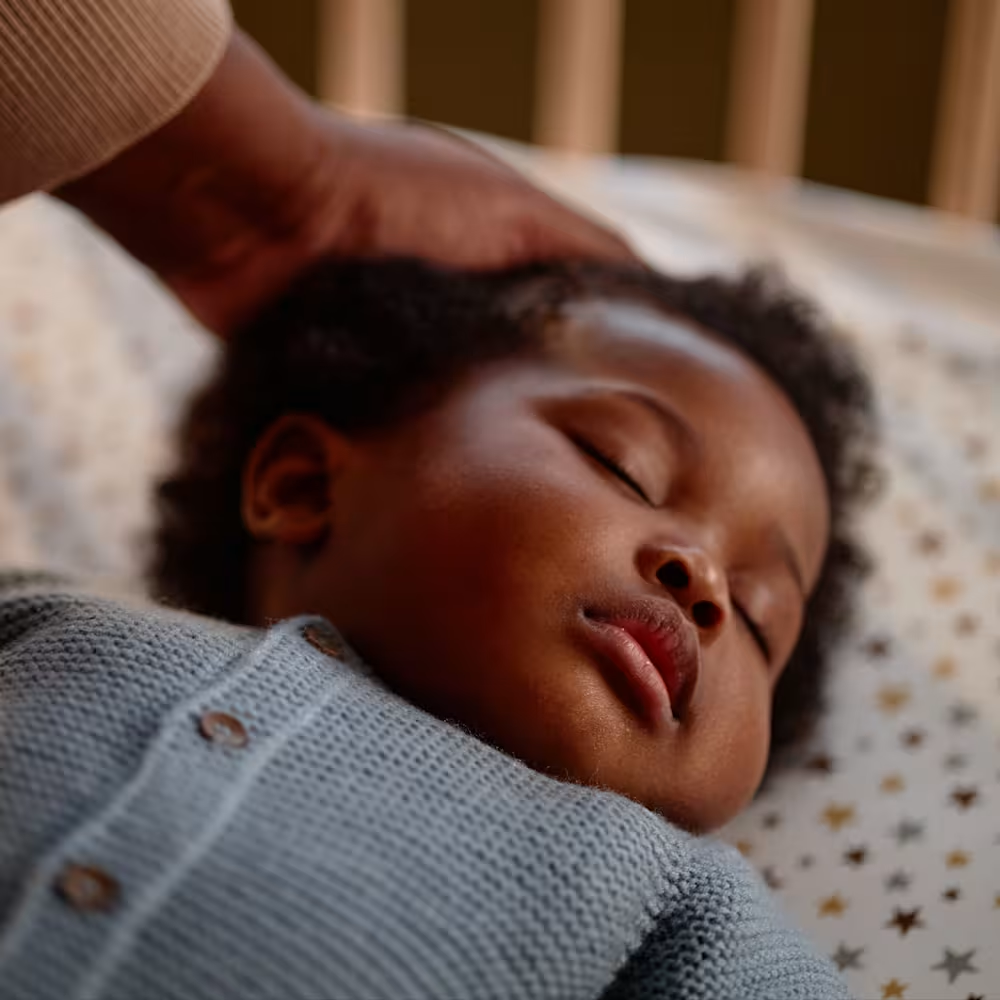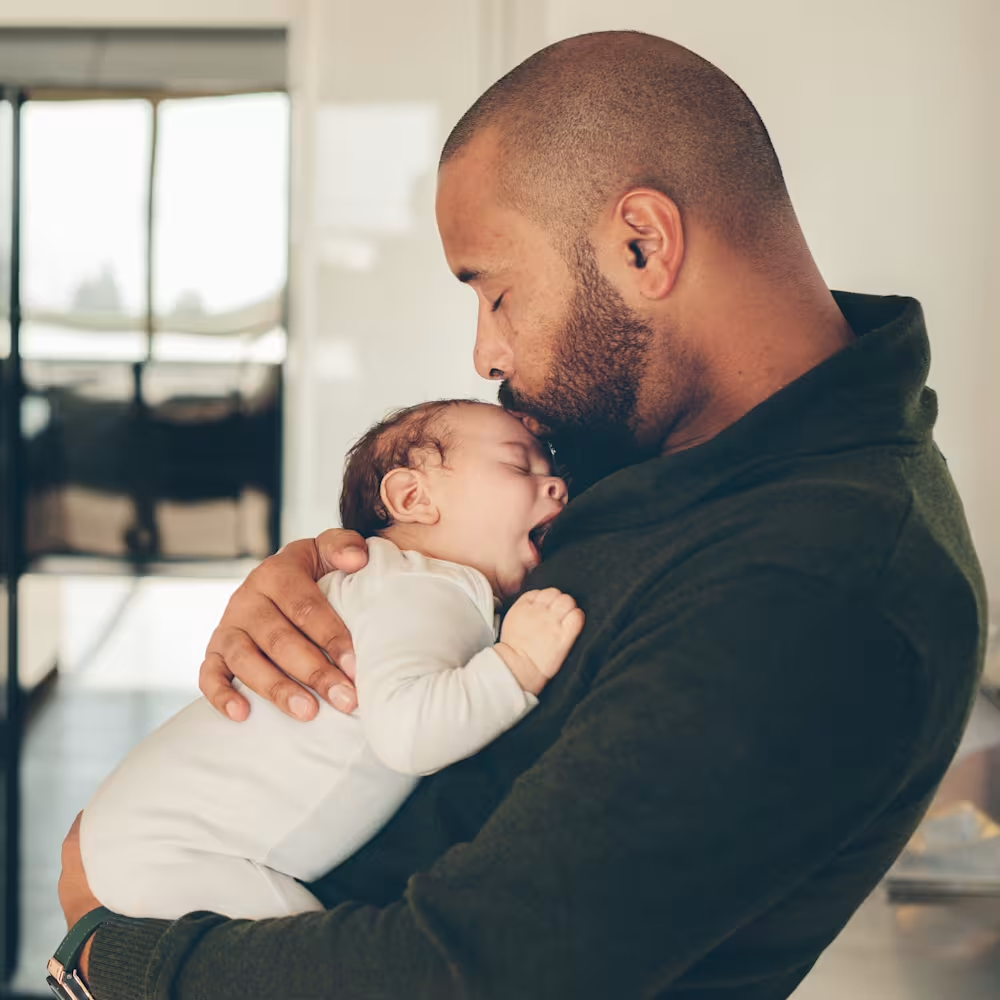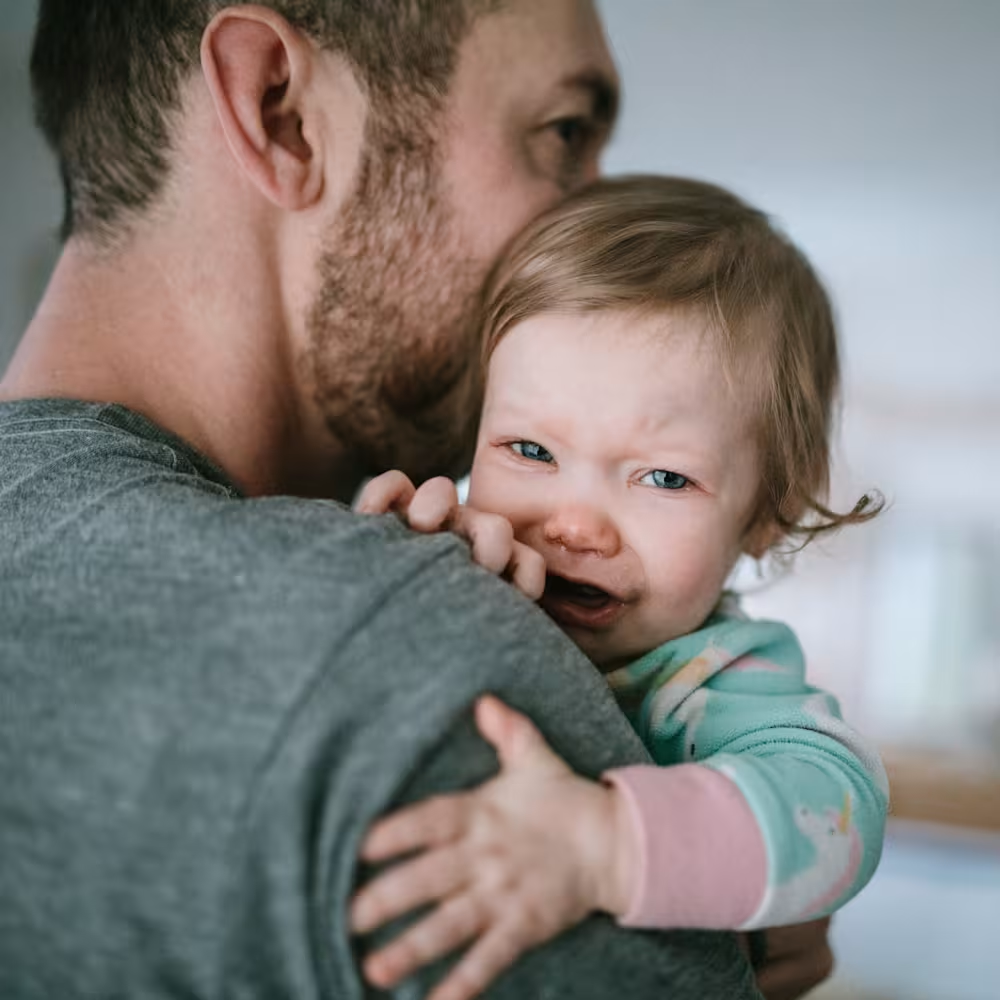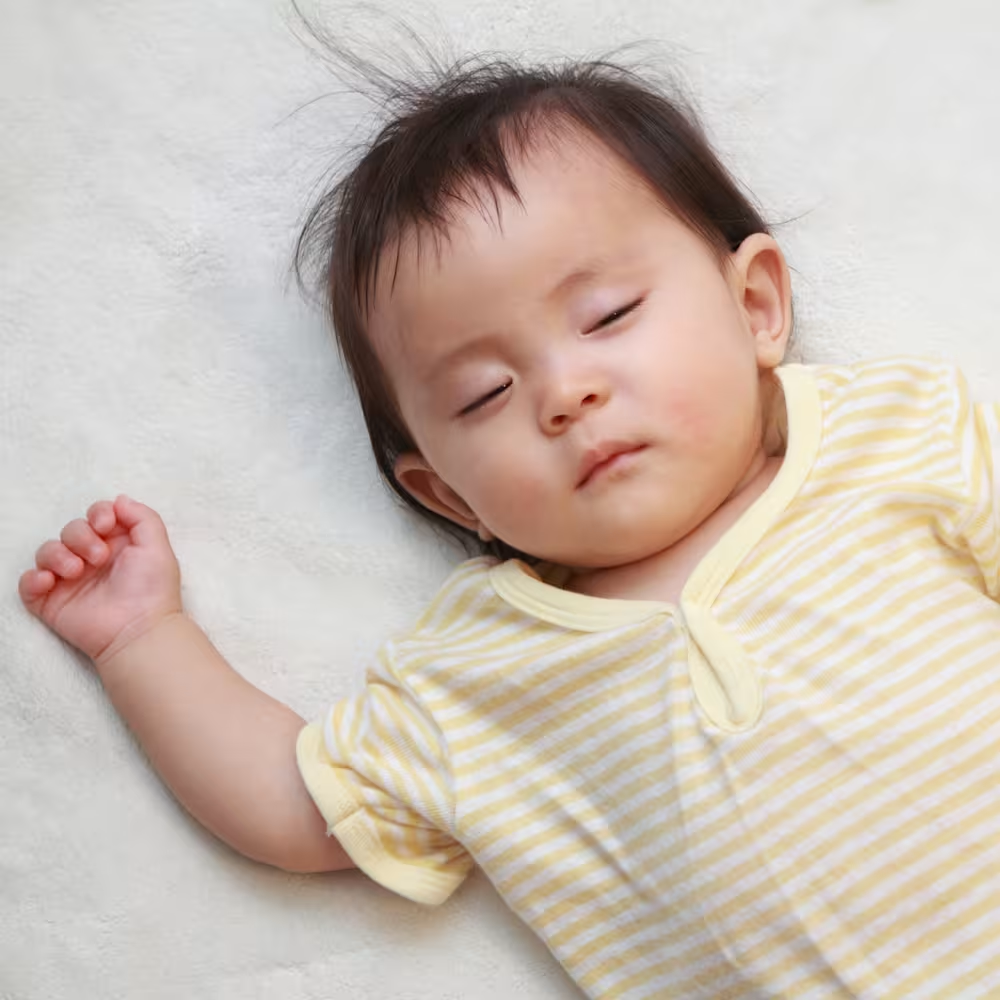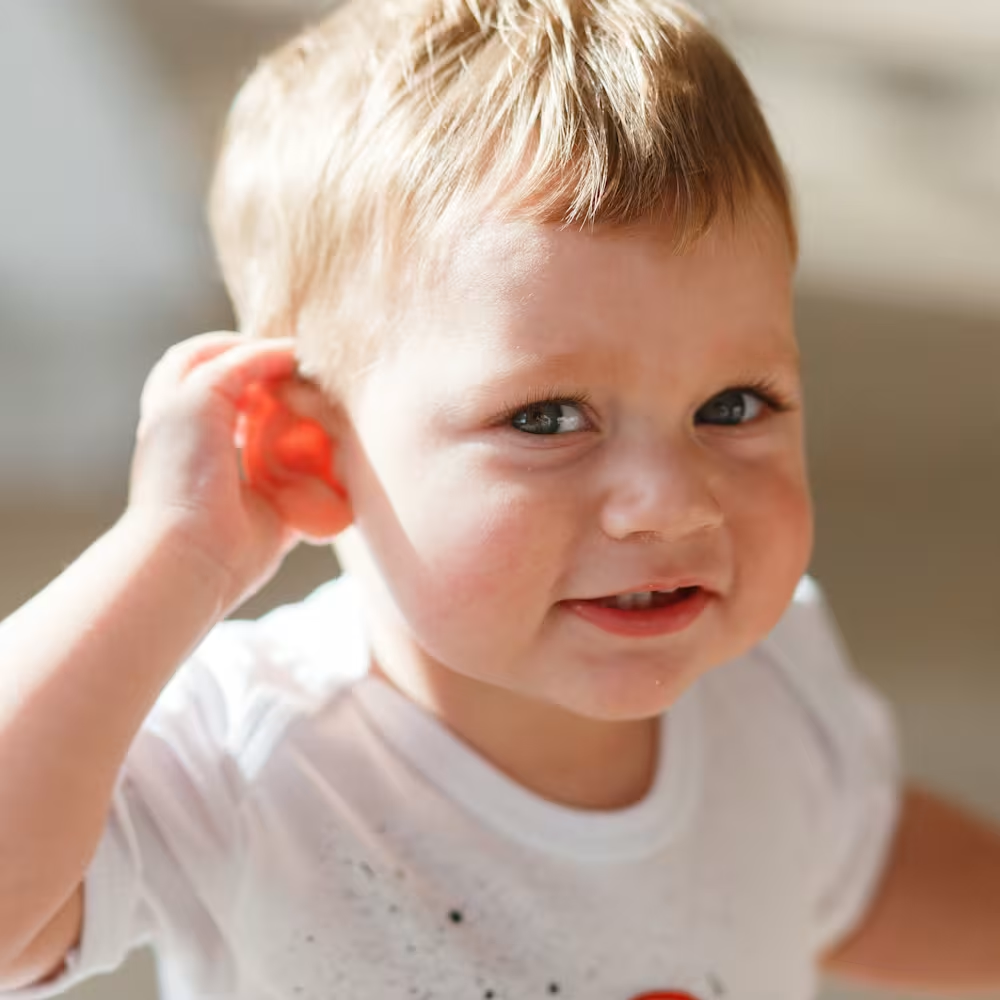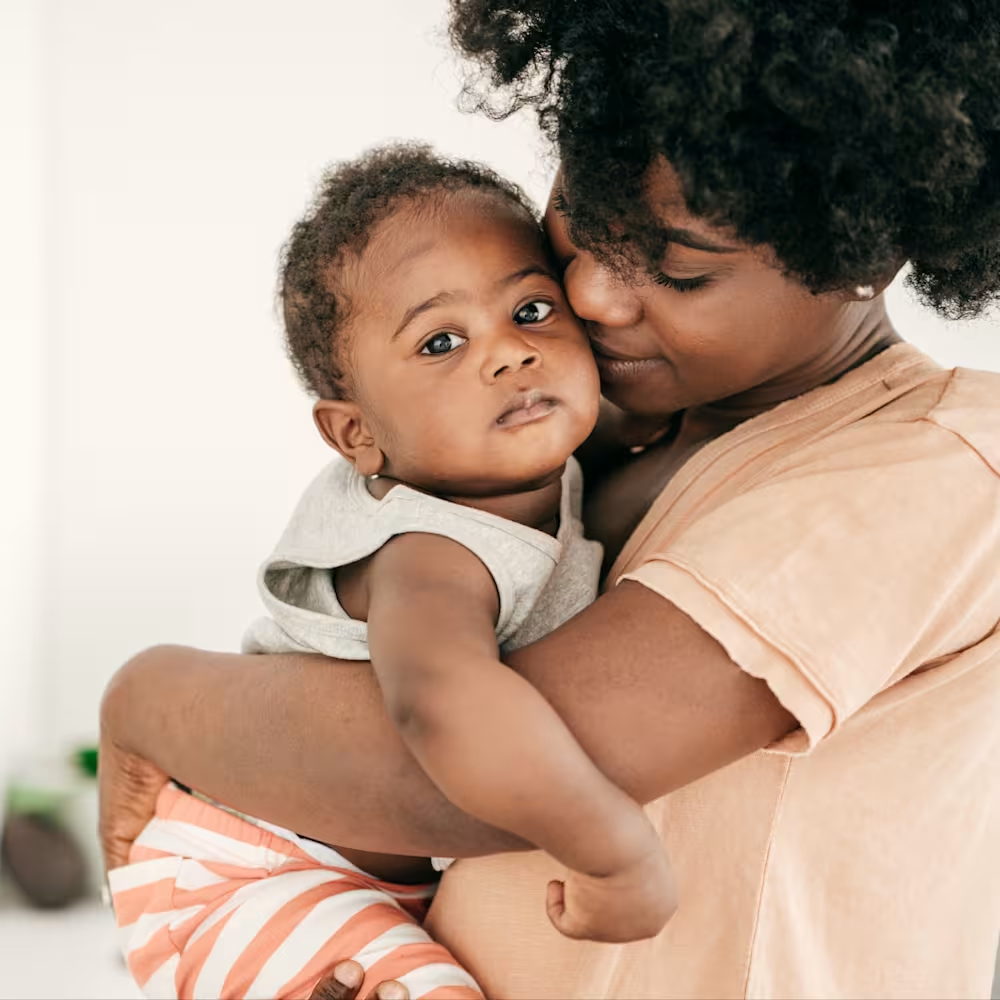Snoring in children: What parents should know
Updated Oct 16, 2025
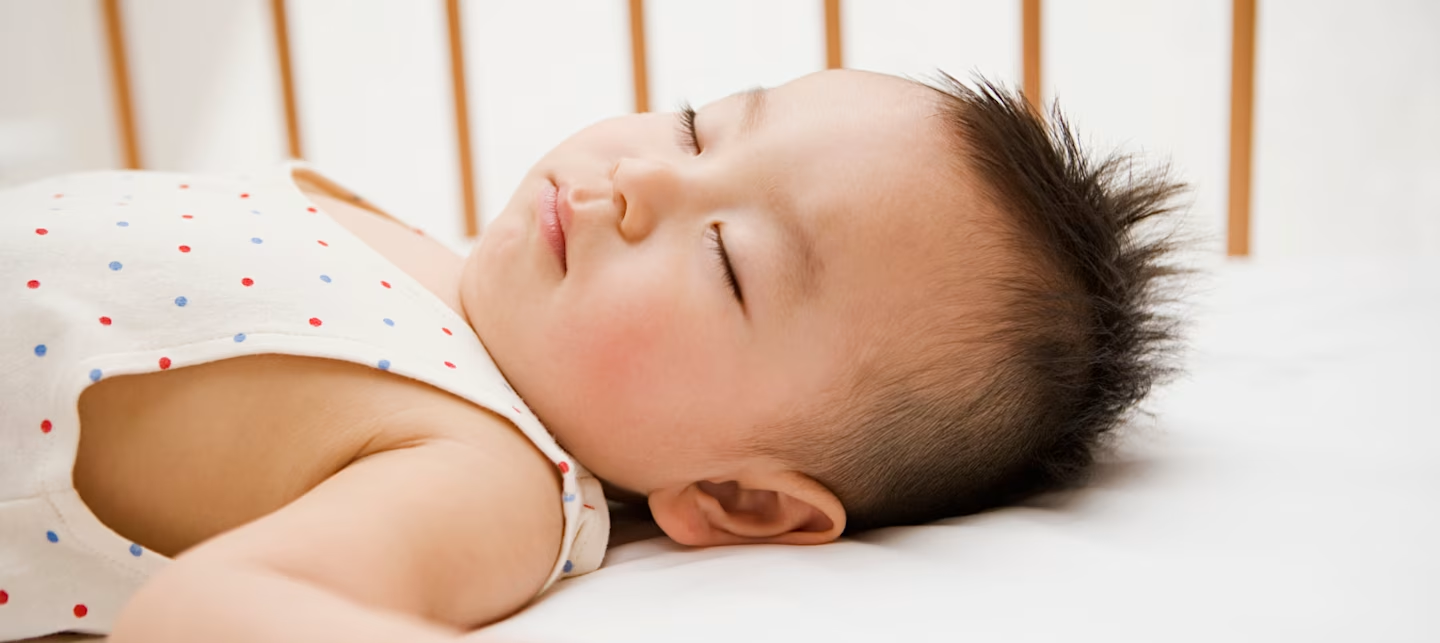
Snoring in babies and toddlers can catch parents off guard, especially when it sounds loud or just plain unusual. While it’s often harmless, snoring can at times signal something more. Knowing what’s normal (and what’s not) at each age can help you feel more confident about when to watch, when to wait, and when to call your pediatrician.
This article breaks it all down in a way that’s easy to understand — no overthinking and no fear-based messaging. We’ll walk you through common causes, when to seek help, and manageable steps you can try at home to support your child’s breathing. Because whether you’re listening to soft newborn snuffles or a toddler’s loud nighttime breaths, your concerns are valid and you’re not alone.
Table of Contents
Is it normal for babies and toddlers to snore?
Occasional snoring in children, especially when they have a cold or are lying in certain positions, is usually nothing to worry about. However, consistent, loud snoring might be a red flag and labored breathing is always a red flag []. (We’ll discuss more below.) While it’s more common in older kids, even babies can snore — and knowing what’s typical at different stages can help you decide when it’s worth a closer look.
Why do babies snore? Common causes
Snoring, or , while newborns sleep is to be expected. Their airways are small, soft, and still developing, which means even a little or a shift in position can lead to sound effects during sleep []. In many cases, this is normal and nothing to worry about.
Some newborns make a high-pitched, squeaky sound when they breathe in — this is called stridor. It’s different from typical snoring, which usually sounds like low, rhythmic vibrations and happens during both breathing in and out. Stridor is rather caused by something called laryngomalacia (basically, a soft or floppy airway). If the sound seems to be getting louder, or if your baby is also having trouble feeding or isn’t growing as expected, it’s a good idea to check in with your pediatrician [].
As babies get older (around 6 – 12 months), their airways grow and become more structured []. Snoring may lessen over time if it’s related to newborn anatomy. However, if snoring becomes louder, more frequent, or continues into toddlerhood, it’s a good idea to monitor for other signs that may suggest a sleep or breathing issue. (More on this later!)
There are a few common reasons babies might snore:
Congestion or colds: Mucus buildup in small nasal passages can lead to snoring, especially when your baby is sick or teething.
Nasal anatomy: Babies have small noses and narrow airways, which can vibrate when breathing.
Dry air: Dry environments may irritate nasal tissues, making snoring more likely. A humidifier can sometimes help relieve this.
Sleep position: Lying flat on their back (as recommended for safe sleep) can occasionally lead to snoring if the tongue or soft palate partially blocks airflow. This often improves as babies grow.
Most causes of snoring in infancy are harmless and temporary, but persistent or worsening snoring may be worth bringing up with your pediatrician.
Age-based snoring guide: What’s normal and what’s not?
Age | What’s normal | When to be concerned |
Newborn
| Nose breathing, occasional snorts or nasal congestion | Persistent noisy breathing, bluish lips, or poor feeding |
3 - 6 months | Snoring during colds or with dry air | Loud, regular snoring (every night) or pauses in breathing |
6 - 12 months | Temporary snoring from teething or illness | Difficulty breathing, poor sleep, snoring without illness more than 3 nights per week |
1 - 3 years | Snoring 2+ nights a week, mouth breathing | Loud snoring, gasping, sleep apnea symptoms, behavioral concerns |
Newborn snoring
Most newborns breathe noisily due to being primarily nose breathers. As long as they’re feeding and gaining weight normally, it’s rarely cause for concern.
3 month old snoring
At this age, nasal congestion and dry air are common triggers. Humidifiers, nasal saline, and nose suctioning can often help.
6 months to 1 year
Snoring that lasts more than a week or seems unrelated to congestion should be mentioned to your pediatrician — especially if it’s disrupting sleep or accompanied by other symptoms.
Toddler snoring (1 - 3 years)
In toddlers, consistent snoring can be a sign of enlarged tonsils or adenoids. If snoring is frequent and loud, or , it’s time to check in with a healthcare provider.
When snoring might be a sign of a health issue
In some cases, snoring is linked to obstructive sleep apnea (OSA) — a sleep disorder where breathing is partially or fully blocked during sleep []. That can sound a little scary, but it’s rare. Most children with snoring don’t have OSA, and even when they do, it’s often very treatable.
Signs to watch for include:
Gasping, choking, or noticeable pauses in breathing at night
Restless sleep or frequent wake-ups
Daytime sleepiness or hyperactivity (sometimes it shows up as extra energy)
Noticeable changes in behavior
Difficulty gaining weight or not growing as expected
If you notice snoring along with any of these symptoms, it’s a good idea to bring it up with your pediatrician. You’re not alone in this — many families face sleep concerns at some point. Your child’s doctor can help you figure out the next best step.
When to talk to a pediatrician about snoring
While occasional snoring — especially while sick — is usually nothing to worry about, there are times when it makes sense to check in with your child’s doctor for extra peace of mind. You’re not expected to figure it all out on your own. Bringing up concerns early can help ensure your child is sleeping and breathing as well as possible.
Consider calling your pediatrician if:
Your baby or toddler snores more than 2 - 3 nights per week, especially if it’s loud or disrupts their sleep
You notice signs of sleep apnea, like gasping, choking, or pauses in breathing during the night
Snoring sticks around, even when your child isn’t congested or showing signs of illness
You’re seeing changes in growth, feeding, or behavior, such as poor weight gain, daytime crankiness, trouble focusing, irritability or hyperactivity
If your pediatrician thinks a closer look is needed, they might recommend further evaluation, such as a referral to an ENT (ear, nose, and throat specialist). That can sound overwhelming, but many families go through this process and find that getting answers brings a huge sense of relief.
In many cases, snoring can be improved with simple and effective treatments or changes to the sleep environment. Above all, trust your instincts. You know your child best, and no concern is too small to bring up.
Home remedies to help reduce snoring in children
If your child’s snoring seems occasional, or related to a cold or , there are a few steps you can try at home to help them breathe more easily at night. These simple remedies may not eliminate snoring entirely, but they can reduce discomfort and promote better sleep.
Add a cool mist humidifier
Dry air — especially during winter or in air-conditioned spaces — can irritate the nasal passages and make snoring worse. in your child’s room adds moisture to the air, which can soothe sensitive tissues and help keep airways more open. Just be sure to clean it regularly to prevent mold or bacteria buildup.
Clear nasal passages
If congestion is the culprit, carefully clearing your child’s nose before naps and bedtime can make a big difference. For babies, try a saline spray or drops followed by a nasal suction tool. For older toddlers, a saline spray may be enough to help reduce stuffiness.
Check their sleep position — with safety in mind
Sleeping flat on the back is safest for babies under 1 year old, but for older children, some sleep positions may contribute to snoring. If you’re concerned, you can always check with your pediatrician for alternative options.
Minimize allergens in the sleep environment
Dust mites, pet dander, and mold are common allergens that can irritate the airway []. Try to:
Use hypoallergenic mattress and pillow covers
Wash bedding frequently in hot water
Keep pets out of the bedroom
Vacuum carpets and rugs regularly
Avoid exposure to smoke, including
Even small changes can go a long way toward improving your child’s breathing at night.
Safe sleep tips
Keep safe sleep guidelines in mind when trying new remedies:
For infants under 1 year, the general AAP advice is to []:
Place them on their back to sleep
Use a firm and flat mattress with no pillows, blankets, or stuffed animals
Keep the crib or bassinet free of loose items
Avoid wedges or positioners unless specifically recommended by a doctor
For toddlers older than 1 year, AAP safe sleep recommendations become a bit more flexible, but safety and comfort are still key. Here's what to keep in mind:
Back sleeping is still encouraged, but side or stomach sleeping is generally considered safe once your child can reliably roll in both directions.
Pillows and blankets can be introduced after 12 months, but keep them lightweight and minimal to reduce risk.
The recommended temperature for baby’s room is 68°F and 72°F (20°C to 22°C). Sometimes that’s not always possible due to location or how well your home’s heating and cooling systems work. Instead of worrying about a specific number, focus on dressing your baby appropriately for sleep.
A firm mattress is still important, but a fitted sheet and a light blanket or sleep sack are okay.
Keep the sleep space clear of heavy quilts, bulky stuffed animals, or anything that could cover the face.
If your child’s snoring doesn’t improve or starts to affect their sleep or daytime behavior, it’s always okay to check in with your pediatrician. You’re not overreacting — you’re advocating for your little one’s health and rest. And that matters.
Takeaway
Occasional snoring is often normal — especially when sick or dry air. Most babies and toddlers snore now and then, and in many cases, it’s due to congestion, sleep position, or their still-developing airways.
Consistent, loud snoring may signal a deeper issue. If your child snores most nights or shows signs like gasping, mouth breathing, or disrupted sleep, it may be a sign of a sleep-related breathing issue. These conditions are often treatable, especially when caught early.
From humidifiers to saline spray and reducing allergens in the sleep space, small changes can sometimes make a big difference. If you’re unsure, it’s always okay to ask for help. Your pediatrician can help determine what’s normal and what might need more attention.
Baby and toddler snoring FAQ
Share article:
Note: The content on this site is for informational purposes only and should not replace medical advice from your doctor, pediatrician, or medical professional. If you have questions or concerns, you should contact a medical professional.
7 Sources
Table of Contents
Share article:
